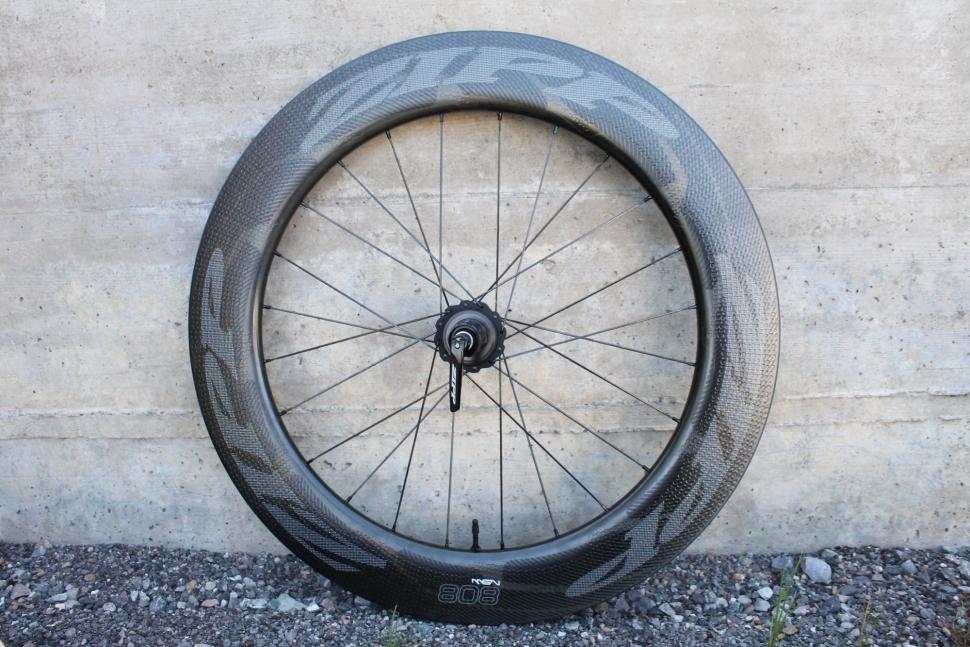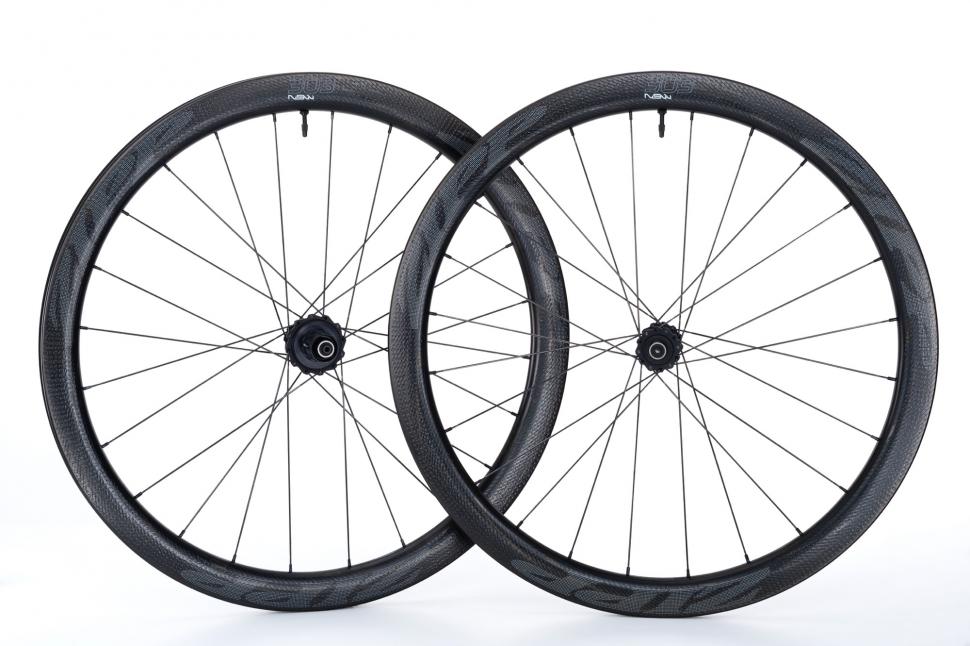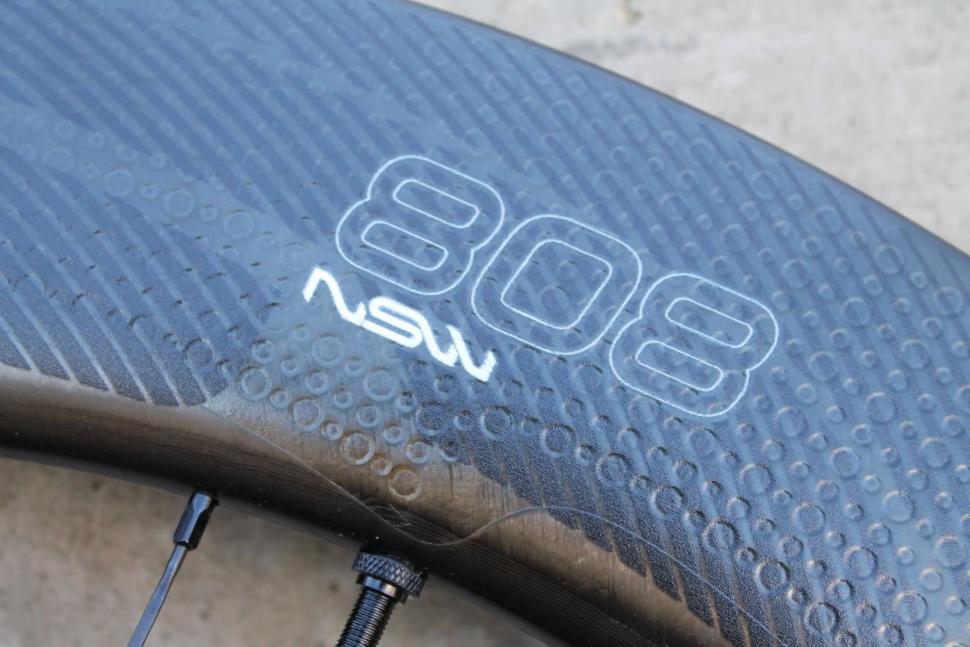- News
- Reviews
- Bikes
- Components
- Bar tape & grips
- Bottom brackets
- Brake & gear cables
- Brake & STI levers
- Brake pads & spares
- Brakes
- Cassettes & freewheels
- Chains
- Chainsets & chainrings
- Derailleurs - front
- Derailleurs - rear
- Forks
- Gear levers & shifters
- Groupsets
- Handlebars & extensions
- Headsets
- Hubs
- Inner tubes
- Pedals
- Quick releases & skewers
- Saddles
- Seatposts
- Stems
- Wheels
- Tyres
- Tubeless valves
- Accessories
- Accessories - misc
- Computer mounts
- Bags
- Bar ends
- Bike bags & cases
- Bottle cages
- Bottles
- Cameras
- Car racks
- Child seats
- Computers
- Glasses
- GPS units
- Helmets
- Lights - front
- Lights - rear
- Lights - sets
- Locks
- Mirrors
- Mudguards
- Racks
- Pumps & CO2 inflators
- Puncture kits
- Reflectives
- Smart watches
- Stands and racks
- Trailers
- Clothing
- Health, fitness and nutrition
- Tools and workshop
- Miscellaneous
- Buyers Guides
- Features
- Forum
- Recommends
- Podcast
TECH NEWS
 Zipp 808 NSW carbon clincher disc 2017 Eurobike - 1.jpg
Zipp 808 NSW carbon clincher disc 2017 Eurobike - 1.jpgZipp launches 8 new disc brake wheels
Zipp has announced a total of eight – count ’em – new wheelsets, all of them disc brake-specific and compatible with tubeless tyres. Let’s go through them…
Why all the new wheels? It’s essentially down to the definition of ‘road bike’ getting wider these days and the influence of gravel. Zipp wants to offer aero options to those who aren’t simply riding on asphalt and using rim brakes.
First up, Zipp is expanding its premium NSW lineup to include disc brake clinchers featuring a new rim shape and tubeless compatibility. NSW is the name that Zipp gives to the range that boasts all of its top-end features. The poshest wheels it makes, essentially.
The US brand has given the disc brake/tubeless treatment to existing models, changing the rim shape and altering the layup, although rim depths remain unaltered:
• 202 NSW Carbon Clincher Tubeless Disc brake (32mm deep) £1,100 (f) £1,440 (r)
• 303 NSW Carbon Clincher Tubeless Disc brake (45mm deep) £1,100 (f) £1,440 (r)
• 404 NSW Carbon Clincher Tubeless Disc brake (58mm deep) £1,100 (f) £1,440 (r)
• 808 NSW Carbon Clincher Tubeless Disc brake (82mm deep) £1,185 (f) £1,525 (r)
“Without the constraints of rim brake calliper compatibility or brake-track requirements, our engineers were free to modify the NSW rim design to be disc-brake specific as well as to be more aerodynamically efficient and stable at the most common wind angles,” says Zipp.
Zipp is able to extend the ABLC Sawtooth dimples all the way to the rim’s edge, rather than needing to stop short in order to accommodate a brake track. The Sawtooth is designed to produce higher frequency vortex shedding for stability in crosswinds.
Zipp says that the 202 NSW and 303 NSW have a 21mm internal width because its engineers found that to be the most aerodynamically efficient option, while the 404 NSW and 808 NSW have a narrower 19mm width because that tested faster in those depths.
Zipp believes that the 202 NSW and 303 NSW are well suited to rough roads and perform fastest with 28mm tyres at the majority of wind angles. The 404 NSW and 808 NSW, more likely to be used on asphalt roads, are aerodynamically optimised for 25mm tyres.
All of the NSW disc brake wheels are tubeless compatible and have a rim bed made with internal ridges to lock the tyre’s bead in place. They also boast features of Zipp’s existing NSW range, including ImPress graphics printed directly onto the rim (as opposed to using decals), said to allow the dimples to do their vortex-shedding job, and Zipp’s Cognition hubset tech that’s designed to cut drag when you’re coasting.
The NSW wheels are Zipp’s lightest carbon clinchers at each rim depth. The 404 NSWs for example, have a claimed weight of 760g (f) and 840g (r). They’re all centre lock and will be available from September/October.
Next up, Zipp is releasing four new Firecrest carbon clincher tubeless disc brake wheelsets (crikey! That’s a mouthful) to go alongside its existing 303 Firecrest one.
These new models are:
• 202 Firecrest carbon clincher tubeless disc brake (32mm deep) £1,015 (f) £1,185 (r)
• 303 650b Firecrest carbon clincher tubeless disc brake (45mm deep) £1,015 (f) £1,185 (r)
• 404 Firecrest carbon clincher tubeless disc brake (58mm deep) £1,015 (f) £1,185 (r)
- 808 Firecrest carbon clincher tubeless disc brake (82mm deep) £1,145 (f) £1,315 (r)
The Firecrest models don’t get the ABLC Sawtooth dimples of the NSW wheels (above) but they do get their own ABLC dimples which, without the need for a brake track, extend right to the outer edge of the disc-specific rims.
As with the NSW wheels (above), the 202 and 303 (pictured) models have a 21mm internal width and are said to be aerodynamically optimised for use with 28mm tyres, while the 404 and 808 models have an internal width of 19mm and are aerodynamically optimised for use with 25mm tyres.
The 303 650b model is an interesting one in that a 650b wheel has a 584mm bead seat diameter rim compared with the 622mm diameter of a standard 700c road rim (don’t confuse it with a 650c wheel which has a rim diameter of 571mm).
Who would want this? Zipp’s thinking is that you’re likely to put bigger tyres on a bike you’re riding on anything but asphalt, and the overall diameter of a 650b wheel plus a chunky tyre is similar that of a 700c wheel with a smaller road tyre.
This wheel might also get used on the road by smaller riders.
All of these Firecrest carbon clincher tubeless disc brake wheels are six-bolt and will be available in October.
The hubs of all eight of these wheels mentioned here come with swappable end caps to work with QRs and thru-axles, including 12x100mm and 15x100mm front thru-axles as well as 12x142mm rear thru-axles.
One more new product from Zipp is the SL-70 Ergo carbon handlebar that comes with the flattened upper shape of the Contour SL bar, a 70mm reach and short 128mm drop. Everyone’s on short drop bars these days.
The drop section has a variable radius, the idea being to allow for multiple hand positions when you’re down there, and the tops have a 3° backsweep that’s designed to keep your wrists comfortable.
The SL-70 Ergo carbon bar has a claimed weight of 205g (42cm) and will be available in 40cm, 42cm and 44cm widths from November, priced £259.
Mat has been in cycling media since 1996, on titles including BikeRadar, Total Bike, Total Mountain Bike, What Mountain Bike and Mountain Biking UK, and he has been editor of 220 Triathlon and Cycling Plus. Mat has been road.cc technical editor for over a decade, testing bikes, fettling the latest kit, and trying out the most up-to-the-minute clothing. He has won his category in Ironman UK 70.3 and finished on the podium in both marathons he has run. Mat is a Cambridge graduate who did a post-grad in magazine journalism, and he is a winner of the Cycling Media Award for Specialist Online Writer. Now over 50, he's riding road and gravel bikes most days for fun and fitness rather than training for competitions.
Latest Comments
- stonojnr 29 min 1 sec ago
exactly, thats my issue, how does knowing the speed, then change the perspective of a close pass ?...
- Dnnnnnn 1 hour 2 min ago
On the subject of value, it's also worth mentioning the discount available through Cycling UK and British Cycling? I also spotted 10% off at...
- NPlus1Bikelights 1 hour 25 min ago
We've saved them multiple times with Kick Starters. Shame. Edit: tense.
- NPlus1Bikelights 1 hour 29 min ago
Or the congregation reads the news and does not like all the stories about ignored abuse by senior members of the church.
- NPlus1Bikelights 1 hour 30 min ago
Kask remains sexier. And their prices, whilst high, are not as over the top as these.
- rookybiker 1 hour 52 min ago
> Are the ASO, basically saying it didn't happen The authority is the UCI. ASO was only the race organiser.
- Miller 2 hours 24 min ago
I remember this being released and thinking it was definitely the future. I built my own kludgy, much cheaper equivalent in 2013....
- brooksby 3 hours 4 min ago
I have a Grand Prix appointment next week anyway, so I may decide to discuss this with them instead of what I'd booked it for...
- David9694 3 hours 6 min ago
Come with me to Brockenhurst, New Forest. It has a train station and a bike shop and in the summer season the area attracts visitors, many of whom...







Add new comment
6 comments
It was how the photo didn't jibe with the sentence "[a]ll of these Firecrest carbon clincher tubeless disc brake wheels are six-bolt".
I found one either needs a cassete tool or a HT2 bottom bracket tool, depending on the axle and hub. Possibly even a different lock ring.
The NSW wheels are centrelock (it says that in the para under the pic you refer to), the Firecrest wheels are six-bolt.
4th picture down, close-up of rear hub from the NDS- looks like centre-lock. Or is there a bit missing?
Looks exactly like centre-lock to me and I've recently had to tangle with installing a new centre-lock rotor and found that thru-axles and centre-lock generally means getting a new cassette tool that can fit over the axle.
I believe centre-lock is designed to replace 6-bolt fittings, so it would make sense for new wheels to use it and if you're buying new wheels, you're not going to be bothered about buying 2 new rotors to fit.
Thankfully the arguments over disk brakes in any form have gone away. But why no lightweight tubular tyre options on these wheels?
Should have called them the NSFWs